OENOTHERA
Oenothera
L., Sp. Pl. ed.1: 346. 1753; Gen. Pl. 5: 163. 1754; Clarke in Hook. f., Fl. Brit. India 2: 582. 1879; Raven in Tutin et al., Fl. Eur. 2: 306. 1968; W. Dietrich, Ann. Missouri Bot. Gard. 64: 425.1978; Raven et al., Sys. Bot. 4: 242. 1979; Chen et al., Fl. China @ eFloras.org 13: 423; Hoch & Raven, Fl. Pak. @ eFloras.org Pak. V. 139, p. 37.
Annual, biennial or perennial herbs, caulescent or acaulescent, with tap root or fibrous roots, occasionally with rhizomes or shoots arising from spreading lateral roots. Leaves alternate or in a basal rosette that is absent in mature plants, entire, toothed or pinnatifid; stipules absent. Flowers bisexual, actinomorphic, 4-merous, epigynous, in axils of upper leaves or in terminal leafy spikes, racemes or corymbs, opening near sunset or sunrise. Hypanthium extended beyond ovary into floral tube; floral tube usually well developed, cylindric, deciduous after anthesis. Sepals 4, green or yellowish, often tinged or striped red or purple. Petals 4, yellow, purple, pink or white. Stamens 8, anthers versatile, sporogenous tissue in each locule undivided. Ovary 4-locular, ovules numerous; stigma deeply 4-lobed, lobes linear, receptive all around. Capsule many-seeded, sessile to pedicellate (or basal portion sterile, stipe like), mostly straight, terete, winged or somewhat 4-angled, loculicidally dehiscent, rarely indehiscent. Seeds numerous, naked, in 1-several rows in each of 4 locules.
157 species
Oenothera laciniata
Oenothera laciniata
Hill, Veg. Syst. 12, App.: 64. 1767; Fl. China @ eFloras.org 13: 425; O. Mexicans Spach, Nouv. Ann. Mus. Hist. Nat. 4: 347. 1835; O. sinuata L., Mant. Pl. 2: 228. 1771; Onagra sinuata (L.) Moench, Methodus 676. 1794.
Herbs, erect to procumbent, annual or short-lived perennial, usually with basal rosette. Stems 5 cm to 1 m tall, simple or branched, strigillose and often villous. Leaves basal and cauline, green, veins inconspicuous, sessile to shortly petiolate, blades narrowly oblanceolate to lanceolate or narrowly elliptic, base narrowly cuneate, margin deeply lobed to dentate, apex acute, cauline leaf blades 2-10 cm x 0.5-3.5 cm and basal (rosette) leaf blades 4-15 cm x 1-3 cm; both surfaces strigillose, often also glandular puberulent. Inflorescence a lax open spike or axillary solitary, with glandular hairs. Flowers open near sunset (one per stem per day). Flowers sessile, bisexual, actinomorphic, 4-merous, epigynous. Hypanthium tubular, extended beyond ovary into floral tube; floral tube 1.2-3.5 cm, upcurved in bud, cylindric, somewhat flared near mouth, deciduous soon after anthesis. Calyx lobes (Sepals) 4, 5-15 mm, with free tips 0.3-3 mm, apical, spreading or reflexed. Petals 4, yellow to pale yellow, fading to orange, free, ca. 5 mm x 3.5 mm, inserted with the sepals at top of floral tube. Stamens 8, in 2 whorls; anthers 2-6 mm long; filaments filiform, 3-10 mm long. Carpels 4, syncarpous; ovary inferior, 4-locular, many ovules in each loculus, placentation axile, ovary strigillose with spreading and sometimes a few glandular hairs; style single, long, filiform, 2-4.5 cm long; stigma deeply 4-lobed, surrounded by anthers. Capsules cylindric, 2-5 cm, sessile, loculicidal, dehiscence by 4 straight valves, valves emarginate. Seeds in 2 rows per loculus, brown to dark brown, ellipsoid to suborbicular, 0.9-1.8 mm, pitted.
Common Names: Cutleaf Evening Primrose
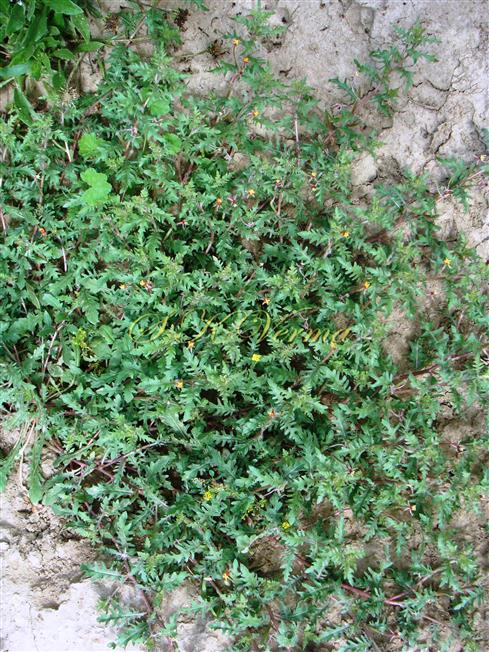
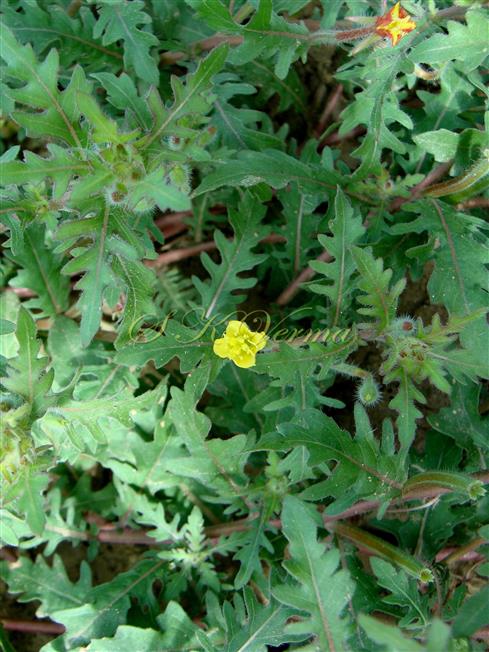
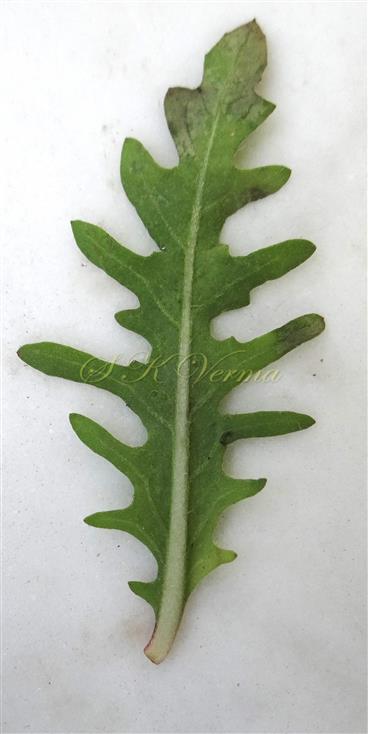
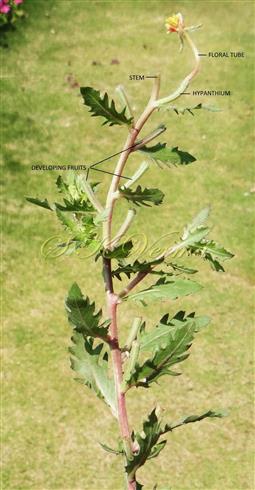
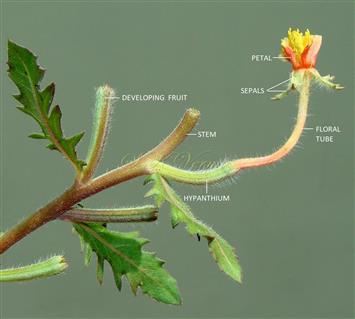
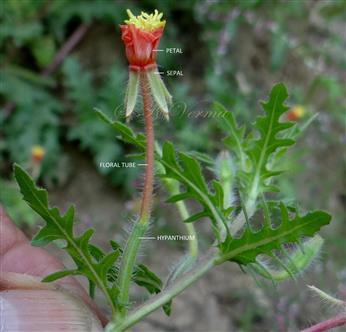
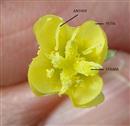
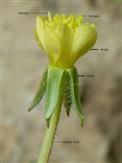
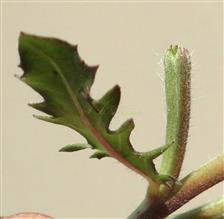
-DSC04213.jpg)
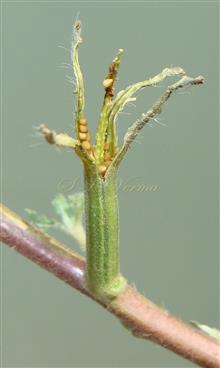










-DSC04213.jpg)
